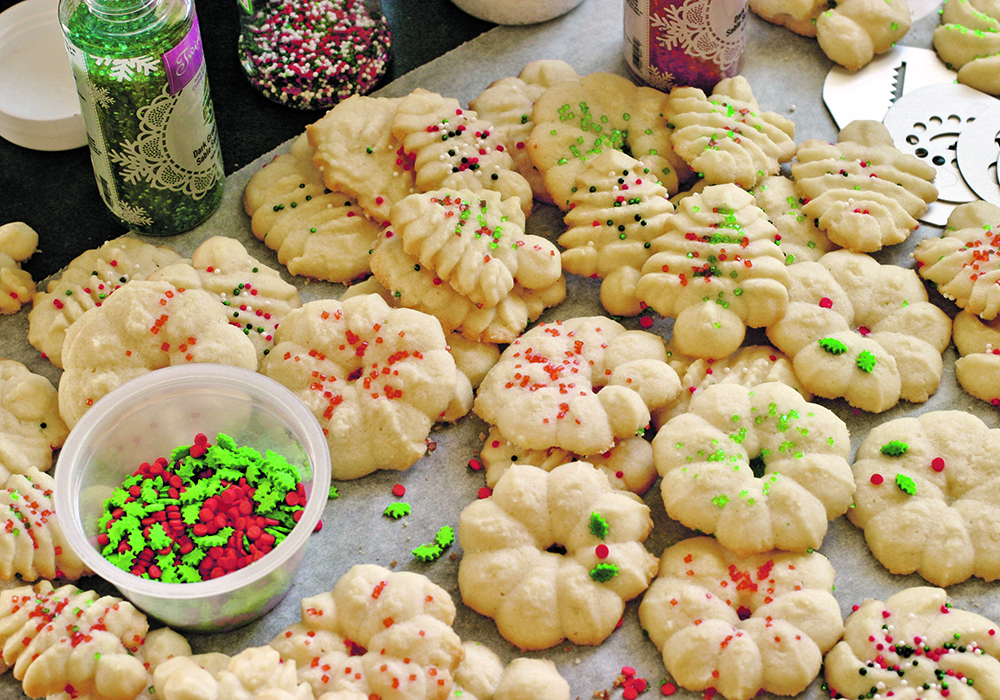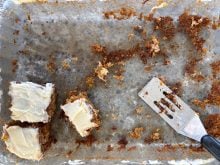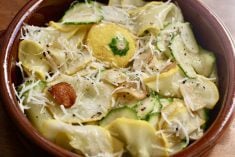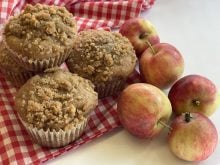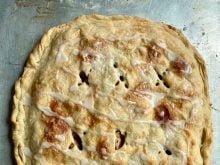Baking is all about ratios and ingredients and technique. The following information can help you when deciding if a recipe will produce the result you want or troubleshooting a recipe that doesn’t seem to be working.
White sugar or corn syrup will create a crispier cookie, whereas honey or brown sugar will produce a chewier cookie. Honey and brown sugar tend to hold moisture rather than release it. Cookies are crispier with no eggs and with eggs they are chewier. Butter has a lower melting point than shortening so it will allow the cookie to spread more. So butter makes a crispier cookie than shortening. Cake flour makes a chewier cookie than all-purpose flour.
Read Also

Know what costs are involved in keeping crops in the bin
When you’re looking at full bins and rising calf prices, the human reflex is to hold on and hope for more. That’s not a plan. It’s a bet. Storage has a price tag.
Chilling the dough will prevent it from spreading so much in the oven, resulting in a chewier cookie. Not chilling will allow the cookie dough to spread, producing a crispier cookie.
If the bottom of the cookie browns too much you may need to bake them on a higher rack. Move it up one notch and try again. Or perhaps you are using a darkened sheet pan. Darker sheet pans produced darker bottomed cookies. Shiny sheet pans produce a lighter bottomed cookie.
Only bake one sheet pan at a time and on the middle position in the oven. This will give best results.
If a recipe calls for softened butter, it’s important to use softened butter. If it’s too cold or too warm, the butter and sugar won’t cream as well, a process in which sugar crystals are whipped into softened butter to create air pockets. Softened butter means lighter, airier baked goods. If a recipe calls for room-temperature butter, it’s a good idea for your eggs and milk to be room temperature as well, so the batter doesn’t seize up from the addition of cold ingredients.
I know this sounds elementary but read the entire recipe carefully and read it again. This is especially important if you need to chill or soften anything. And it will tell you the tools you need.
It is Christmas season and shipping your cherished baking is a gift of love. Delicate cookies like the pecan sable will need a bit of cushioning. A cheap and effective filler in the box is popped popcorn. If you want to salt and flavour it, put the popcorn in bags so it becomes another gift.
Firmer baking, like biscotti, may need to be more dry and crisp. Packaging it in a vacuum-sealed bag is effective. For added assurance add a packet of dessicant to absorb any moisture. These little packets are often in over-the-counter pills. Don’t throw them out. Save them for adding to your packages of cookies.
Pecan sable
A sablé is a French style shortbread. It is buttery and rich but is different from a shortbread because it uses eggs. The word sable is French for sand and they have a crumbly texture, hence, the name.
- 1/2 lb cold, unsalted butter cut into small pieces 125 mL
- 2 c. all-purpose flour 500 mL
- 1/2 c. finely chopped pecans, plus more for rolling 125 mL
Pulse until the mixture resembles fine crumbs.
Beat together until well blended and add to the flour mixture in the food processor:
- 3 large egg yolks
- 1/2 c. white sugar 125 mL
- 1/4 c. powdered sugar 60 mL
- 1/8 tsp. salt .5 mL
- 1 1/2 tsp. vanilla 7 mL
- 1 tbsp. finely grated orange or clementine zest 15 mL
Pulse until dough comes together. Divide dough in half. Form each half into a log that has about a two-inch (five centimetre) diameter. Roll the logs in more finely chopped pecans. Wrap in waxed paper and put in the refrigerator to chill for about 30 minutes. These can also be tightly wrapped and frozen at this stage and kept in the freezer for up to two months before baking.Heat oven to 350 F (180 C).
Take log out of the refrigerator and slice into scant 1/2 inch (one cm) cookies. Place on a bare, ungreased sheet pan and bake for about 12 minutes. The bottoms should brown lightly. Be careful not to overcook.
When cooked, remove from oven and let them sit on the sheet pan for a minute or two. Then transfer to a cooling rack to thoroughly cool. Be sure the baking sheet is cold and clean before baking the next batch.
Basic spritz cookies
This is a basic butter recipe that will produce very good results. It may look like the time creaming the butter and sugar and eggs is excessive but it really isn’t. Follow the instructions for the lightest and crispiest cookies.
- 1 c. unsalted butter, softened to room temperature 250 mL
- 3/4 c. granulated sugar 175 mL
- 1 large egg, at room temperature
- 1 tsp. pure vanilla extract 5 mL
- 1 tsp. almond extract 5 mL
- 2 – 2 1/4 c. all-purpose flour 500-560 mL
- 1/2 tsp. salt 2 mL
- sprinkles, chocolate chips, and melted chocolate for decoration, optional
Preheat oven to 350F (180 C).
In a large bowl, using a handheld mixer or a stand mixer fitted with a paddle attachment, beat the butter and granulated sugar together on medium-high speed for seven minutes. Add the egg, vanilla extract, and almond extract, and beat on high speed until combined another seven minutes. Scrape down the sides and up the bottom of the bowl often.
Add the flour mixture and mix in with a rubber spatula until no dry flour remains. And then stop. Start with two cups (500 mL) of flour. The mixture will be firm but not dry. If it seems too moist add the additional 1/4 cup (60 mL) of flour and mix in.
Place the design disk into the cookie press tube. Form the dough into a log the same diameter as your cookie press. Insert it into the cookie press and cut off any excess. Screw the top on. Forming the log first prevents any air holes in the dough.
Place the cookie press on the bare, ungreased, cold sheet pan and turn the knob once. The first cookie may require more turns. If so scrape off excess dough and do it again. Cookies may be placed two inches (5 cm) apart. They do not spread very much in the oven. Continue pressing cookies until the sheet pan is filled.
Top with sprinkles, as desired. You can brush the cookies with a sugar syrup before sprinkling the decorations. It will help them adhere.
If the cookie dough becomes too soft as you work, chill the shaped cookie dough in the refrigerator for 10 minutes before baking. And place the cookie press tube in the refrigerator if the dough becomes too warm.
Bake until very lightly browned on the edges, seven to nine minutes.
Remove from the oven and allow to cool on the sheet pan for five minutes before transferring to a wire rack to cool completely. If desired, drizzle with melted chocolate.
Cookies stay fresh in an airtight container at room temperature for up to one week.
Christmas biscotti
- 1/3 c. mixed dried fruits 75 mL
- 2 tbsp. rum 30 mL
- 1 1/2 c. flour 375 mL
- 1 1/2 tsp. baking powder 7 mL
- 1/4 tsp. salt 1 mL
- 1/2 c. yellow cornmeal 125 mL
- 1/2 c. unsalted butter, at room temperature 125 mL
- 1 c. sugar 250 mL
- 2 large eggs
- 1 1/2 tsp. almond extract 7 mL
- 3/4 c. slice almonds 175 mL
Use any dried fruits you like such as dried cranberries, cherries, currants, raisins or ginger. Soak in rum overnight.
Whisk dry ingredients in a bowl. Cream butter and sugar with paddle attachment in a stand mixer for five minutes. Add eggs and almond extract and beat again for about three minutes.
Add flour mixture and almonds. Mix on slow speed just until no there is no dry flour.
Prepare a sheet pan by lining it with parchment paper. Scrape half of the dough onto one side of the sheet pan. Using an offset spatula form the dough into a flat log about two inches (five cm) wide by 12 inches (30 cm) long. Repeat with the remaining dough. It will be shaggy and bumpy. That’s OK.
Bake for 15 minutes or until a toothpick poked into the centre comes out dry. Remove from oven and cool for 30 minutes.
Transfer to a cutting board and slice into 3/4 inch (1.8 cm) thick slices. Return slices to the sheet pan but put them on edge. Bake at 325 F (160 C) until firm. Turn off oven and let them sit in the warm oven with the door ajar until cooled.
Sarah Galvin is a home economist, teacher and farmers’ market vendor at Swift Current, Sask., and a member of Team Resources. She writes a blog at allourfingersinthepie.blogspot.ca. Contact: team@producer.com.

